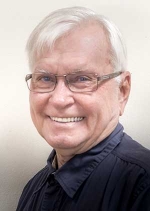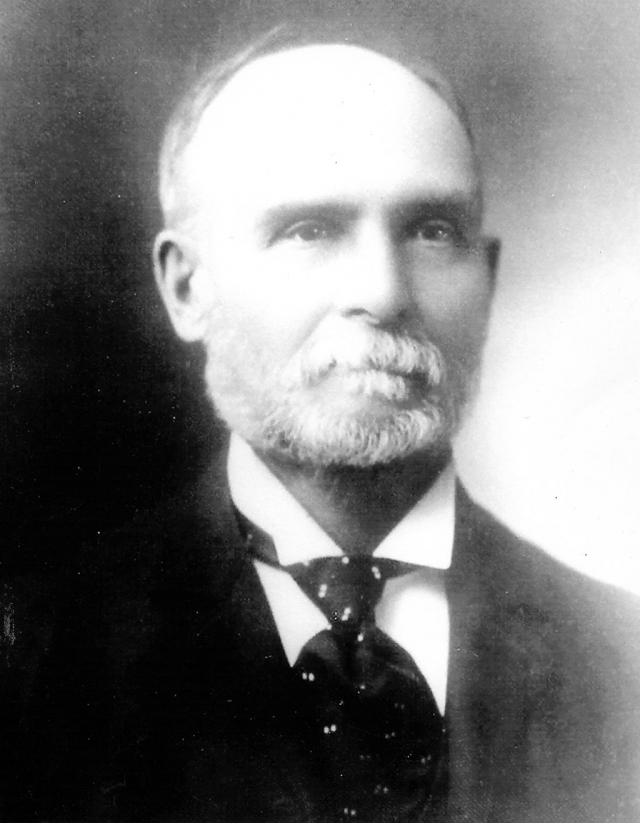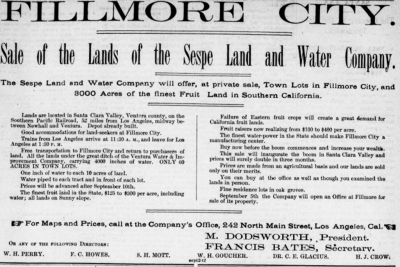|
By Anonymous — Wednesday, May 27th, 2020
Launches New Campaign to Motivate the Public to Donate
Vitalant, the nation’s largest nonprofit, independent blood collector, serving the local community in the Central Coast, has declared a critical shortage of blood as supplies have been significantly impacted by the coronavirus pandemic. Shelter-in-place orders led to 762 blood drives canceled since early March alone, resulting in a loss of 25,194 uncollected blood donations. That, coupled with a resumption of surgeries and other medical procedures as stay-at-home restrictions were lifted, has caused a 25% increase in the need for blood during the past several weeks. All blood types are critically needed right now, with an especially high need for type O, A-negative and B-negative red blood cells. In addition, platelets are always needed by patients for cancer treatments, surgeries and emergencies. Because of its short shelf life—only 5 days—the supply of platelets must be continually replenished. Donors are strongly urged to give blood as soon as possible by going online to vitalant.org or calling 877-258-4825 (877-25-VITAL). “We strive to maintain a 4-day supply of blood just to provide what patients need, and currently we’re at less than half that for certain blood types,” said Dr. Ralph Vassallo, Chief Medical Officer at Vitalant. “It’s absolutely vital—a matter of life or death for some—to have enough blood collected and readily available on hospital shelves when patients need it.” Vitalant recently released its Because of You, Life Doesn’t Stop campaign, calling on all donors to take action now and give blood or convalescent plasma to meet immediate and ongoing needs. Recovered COVID-19 patients have immune-boosting antibodies to the SARS-CoV-2 coronavirus in their plasma, which can be given to patients currently fighting COVID-19. “The public responded when thousands of blood drives were canceled—more than 100,000 units of blood lost—at the beginning of the pandemic,” said Cliff Numark, Chief of Marketing. “We are in the aftermath and we need to let people know that without donating blood today, life could stop for hospital patients.” The U.S. Surgeon General and Federal Emergency Management Agency (FEMA) have designated blood donation as an essential activity, encouraging healthy and eligible donors to continue to donate even amidst COVID-19 response measures. From coast to coast, all Vitalant centers continue to deploy strict precautionary measures to ensure the safety of donors, patients and staff, including: • Taking donors’ temperatures upon check-in (staff self-monitor their temperatures) • Requiring face masks or cloth-based face coverings (donors and staff) • Disinfecting donor-touched and other high-touch areas often and after every donation • Ensuring social distancing to keep donors and staff safe. For more information on donating blood, view the PSA. To join the larger conversation about blood and plasma donations visit: Twitter, Instagram and Facebook and use the hashtag #VitalToLife. Insights, messaging and creative donated by LRW Group Companies including LRW, T3 and Karma Agency. Additional data provided by LRW partner LUCID. About Vitalant |
 Earl Hume, a traffic officer who came to Fillmore in 1922 and made chief in 1925. Photos courtesy Fillmore Historical Museum. Enlarge Photo By Anonymous — Wednesday, May 27th, 2020
Courtesy Fillmore Historical Museum The “law” in Ventura County began in 1872 when Governor Newton Booth signed assembly bill Number 218 separating Ventura County from Santa Barbara County. At the time it is estimated that there were about 5000 people living in the new county. Within 60 days elections were held for county officers with Frank Peterson being elected sheriff. He had a variety of responsibilities which included protecting the citizenry, resolving disputes, catching criminals, collecting taxes and serving subpoenas over approximately 1,800 square miles. He was assisted by two deputies. The sheriff’s office was supported by fees paid when he performed one of his required jobs. He was paid only for his services, he received no salary. When T. Wallace More of Rancho Sespe was murdered in March, 1877, the Ventura County Sheriff refused to travel to Rancho Sespe to investigate. It wasn’t lack of jurisdiction but lack of money. He said that his budget did not have funds for investigations and besides if the public asked him to investigate he would never get anything else done. The surviving More brothers had to hire their own investigators to find out who had done the dastardly deed. Fillmore did not exist until the arrival of the railroad in 1887. The population was scattered across the valley on small farms. But with the railroad’s arrival, the population began to grow. For the next dozen years, the county sheriff was still the law in Fillmore. But as population and crime increased, it became apparent that a local lawman was needed. By 1897, Owen Miller had been hired as Fillmore’s first Constable. One of his earliest investigations had to do with the murder of fellow officer, Deputy Constable McCoy Pyle, in April 1897. The perpetrator turned out to be a fellow lawman and Pyle’s supposed best friend, Deputy Constable Edward McCamish, over a property theft. Miller also owned a hotel and was reputedly one of several local bootleggers. It was reported that he arrested two of his competitors, sent them to jail in Ventura and thus had several weeks without competition. One of the longest serving Fillmore Constables was John, “Jack”, Casner, who served 31 years. Jack came to Fillmore in 1904 buying a stable on Main St. In 1910 he became Deputy Constable under then Constable Jack Trotter. In 1914 he was elected Constable and served in the position for the next 31 years. He told Charles Jarrett that the only time he faced personal danger was transporting a murderer from Sespe Hot Springs to Ventura. He could see the man weighing the possibility of escape, so nearing Tar Creek he told his deputy to “keep a sharp lookout for some men who were planning on coming out to meet the party so that they could lynch him.” From then on the murderer was very eager to remain under the protection of his guards. It was almost 4 decades after the More murder that the next major crime happened. In 1915, Mason Bradfield shot George Henley of Sespe Brownstone fame in broad daylight in front of the Orange Leaf Café on Central Ave. Like many crimes it was a dispute over property rights that triggered the shooting. Bradfield was so angry that he followed a bleeding Henley down the street, shooting as he went. Constable Owen Miller finally stepped in to stop the action after Bradfield ran out of bullets. According to Edith Jarrett’s book “Old Timers’ Tales of Fillmore,” Bradfield went to jail and upon release ran in to Owen Miller who gave him back his gun and said, “Next time, do a better job.” Probably the most memorable lawman was Earl Hume. He came to Fillmore in 1922 as a traffic officer and in 1925 was made Chief. He served until June 1967, (a one-man force) the longest term of any in history. When dealing with youthful offenders he often made the sentence fit the crime. One group of boys having stolen the school superintendent’s hubcaps were sentenced to 6 months washing the police cars. For more information about Fillmore visit the museum website or Facebook page. |
 Photo of the Week "Port San Luis boat yard and village from the Harford Pier" by Bob Crum. Photo data: Canon 7DMKII camera, manual mode, Tamron 16-300mm lens at 29mm. Exposure; ISO 1250, aperture f/11, 2-second shutter speed. Enlarge Photo By Bob Crum — Wednesday, May 27th, 2020
5-4-3-2-1-Click!
Back in the film days, I received a phone call from an excited Florida marina manager friend. "You have to see this new boat," he yelled! I jumped in my '86 Chevy pickup and boogied. Oh my, a 36-foot fiberglass sport fisherman complete with transom door, outriggers and flybridge. Wow! Twin diesel engines pushed the revolutionary hull through the ocean. The owner came by and filled us in on the details as we drooled. Later, the processed film revealed bad news: All 36 exposures were out of focus. Repair shop found the lens focusing mechanism misaligned. Fortunately, it wasn't an assignment, and I got a better do-over. The boat owner invited me back to go out on the ocean for on-the-water photos. Action photos shot and I sold the photos to a boating magazine. Karma? From that day on, focusing remained uppermost in my mind. In these days of autofocus, inaccurate focus is not acceptable. Publications will not accept out-of-focus photos. Furthermore, if I spend $hundreds on a lens, I expect it to perform correctly. But what if it doesn't? At a photography conference, I learned that even new lenses could exhibit focusing errors for various reasons. I also discovered a tool called LensAlign. But using LensAlign is like washing my truck's windshield with an ice cube: Tedious. But I can assess whether a camera-lens combination is autofocusing accurately and, if not, the amount of deviation. Three lenses I tested autofocused accurately, two didn't. A slight focus issue might not be noticeable in a photo from a 10MP camera. However, it is noticeable in a photo from a 20+ MP camera like mine. Stopping (closing) down the aperture tends to minimize the appearance of autofocus errors. But open the lens aperture for bokeh, as I do for my mermaid boudoir photoshoots, and unacceptable blur occurs. One lens back-focused slightly, and one front-focused slightly. Back or front focus is the autofocus error of the lens when the focus point falls behind or ahead of the subject. Being somewhat out of focus creates the appearance of a slight blur. After adjusting my Canon 7D MKII camera's AF microadjustment for each lens, the now sharp photos made my toes wiggle. Gearheads need to keep in mind that it's not a lens issue alone. It involves both the camera and lens combo. For the timid types, there are affordable camera & lens calibration services such as 'Perfect Image.' The photo of the week was quite a challenge to create. Last fall, PCD (Pre COVID Days) I was shooting on the Harford on the San Luis Bay until after sundown. As I was returning to the parking lot, a photo opp suddenly appeared. Standing in the middle of the pier, the composition was so-so. I retreated a few feet to an alcove. From there, I framed a lovely composition. However, exposure issues prevented making the photo. If only I could shoot out the overhead light messing with my camera's light meter. I moved to the other side of the pier. Voila! Uh, another problem: A two-second shutter speed was necessary for the required exposure! Good grief! A 2-second handheld photo is not practical. Without a tripod, it was cry or improvise. I improvised. I programmed the camera's timer for 10 seconds, put the camera on the pier railing, re-composed the photo and pressed the shutter release button....5-4-3-2-1-Click! I love the boats on the far left and the stars in the distant sky. Ah, sweet success. Send comments, suggestions or questions to: focusonphotography@earthlink.net |
|
By Ventura County Sheriff Department — Wednesday, May 20th, 2020
A Piru resident stole a vehicle from an apartment complex. The victim later spotted the vehicle in Fillmore. The victim alerted the Sheriff’s Office. Deputies located the stolen car and the suspect, Jose Luis Orozco. Orozco was arrested for the theft of the vehicle and drug related charges. On the morning of 05/14/2020, deputies responded to a stolen vehicle call in the 2900 block of Telegraph Road, in the unincorporated area of Piru. The victim had parked his vehicle in the parking lot of his apartment complex, where it had remained parked for about a week. When the victim came out of his residence this morning, he discovered his vehicle was missing. The victim called the Sheriff’s Office and reported the vehicle stolen. Several hours later, as the victim was traveling eastbound on SR 126 near Santa Paula, he saw his vehicle in front of him. The victim began following the car and called the Sheriff’s Office to report he was following the suspect. The victim continued following his vehicle until the suspect parked it and walked into a residence in the area of Palm Street and Santa Clara Street, in the City of Fillmore. Deputies and Detectives from the Fillmore Police Department along with members of the Sheriff’s Gang Unit began a surveillance on the unoccupied stolen vehicle. When the suspect retuned to the vehicle a short time later, he was quickly arrested. The suspect was identified Jose Orozco. During a search of Orozco, Investigators recovered drugs and related paraphernalia. Orozco was booked at the Pre Trial Detention Facility for: Orozco is currently being held without bail and is scheduled to appear in court on 07/14/2020. The Ventura County Sheriff’s Office would like to remind the public that crime prevention begins at a personal level. When possible, keep your valuables out of sight or at home. Keep your vehicle locked when unattended and avoid leaving your car keys in your car. Nature of Incident: Vehicle Theft Suspect Arrested Ventura County Crime Stoppers will pay up to $1,000 reward for information, which leads to the arrest and criminal complaint against the person(s) responsible for this crime. The caller may remain anonymous. The call is not recorded. Call Crime Stoppers at 800-222-TIPS (8477). |
|
By Anonymous — Wednesday, May 20th, 2020
 On Tuesday, May 19th at 4:15pm at 971 Third Street in Fillmore, a two car collision involving a silver sedan and a bright yellow Subaru. No injuries were reported at the time of the accident. Cause is still under investigation. Enlarge Photo |
|
By Anonymous — Wednesday, May 20th, 2020
 In April of this year Fillmore Unified School District announced the start of improvements to the Fillmore Middle School baseball and soccer fields, thanks to Measure V Bond, passed by residents of Fillmore and Piru in the 2016 election. Pictured above are some progress photos of the work in progress. Enlarge Photo |
|
By Anonymous — Wednesday, May 20th, 2020
 If you are enjoying the beauty of the Sespe Creek with your friends and family, please keep it clean! Pictured is a mess left behind by some visitors. Enlarge Photo |
|
By Anonymous — Wednesday, May 20th, 2020
Wildfire season is quickly approaching, and we must all do our part to be prepared. On May 27th at 6:00 p.m., Southern California Edison will be hosting a virtual community meeting for the Santa Paula and Fillmore areas to discuss their COVID-19 response, 2019 lessons learned, 2020 Wildfire Mitigation Plan, Public Safety Power Shutoffs (PSPS) and Customer Care Programs. To register, please visit https://conta.cc/2zN3i5h. |
|
By Anonymous — Wednesday, May 20th, 2020
Information/Discussion: Adopt Resolution #19-20-17 for Temporary Loans Between District Funds Fiscal Year 2020-21 Adopt Resolution #19-20-18 for Appropriation Transfers Fiscal Year 2020-21 Adopt Resolution #19-20-19 for Unrepresented Employee Compensation to be Declared Indefinite for Fiscal Year 2020-21 Adopt Resolution #19-20-20 Authorizing the Borrowing of Funds for Fiscal Year 2020-2021 and the Issuance and Sale of One or More Series of 2020-2021 Tax and Revenue Anticipation Notes Therefor and Participation in the California School Cash Reserve Program and Requesting the Board of Supervisors of the County to Issue and Sell Said Series of Notes Personnel Recommendations Approve Change Order #3 for Fillmore High School Existing CTE Building Demolition & CTE New Building Construction Project, 555 Central Avenue, Fillmore, CA 93015, Project 2020-003 Approve Change Order #1 for Fillmore Middle School Baseball/Soccer Field Improvements Project, 543 A Street, Fillmore, CA 93015, Project 2020-004 |
|
By Anonymous — Wednesday, May 20th, 2020
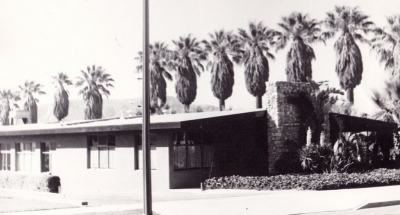 McNab Building 1968 on Sespe. This was the location of the headquarters of Sespe Land and Water Company. Enlarge Photo 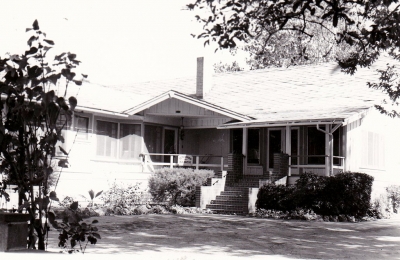 McNab house on First Street and Saratoga. It was originally built on Catalina Island and moved to its current location. Enlarge Photo Courtesy Fillmore Historical Museum We know where the name Fillmore came from but why was the city located as it is between Pole Creek and the Sespe? Why was it not on Adams Hill east of Fillmore where the railroad wanted to place a depot? After the murder of Thomas Wallace More in 1877, Rancho Sespe was divided among his heirs. The youngest son, Alexander’s, portion eventually became the property of Morton Hull of Chicago and was the Rancho Sespe that people in the area knew until the 1980s. The portions inherited by two other sons, Thomas and Wallace, were purchased by Royce Surdam and Thomas Bard and became Bardsdale. The final part was inherited by More’s eldest child, Martha (Mattie) More Storke, who sold her portion, about 3,300 acres, to the Sespe Land and Water Company. This final portion became Fillmore. The Sespe Land and Water Company was incorporated in April of 1886 as a subsidiary of the Ventura Water and Improvement Company. The stockholders of both companies were W. H. Perry, F. C. Howes, S. H. Mott, W. H. Goucher, M. Dodsworth, L. W. Dennis, Dr. C. E. Glacius, H. J. Crow, Francis Bates and J. D. McNab. According to the Los Angeles Herald, this was a “syndicate, comprising some of Los Angeles’ heaviest capitalists.” Only one name will be familiar to local folks, Joseph McNab. Some of the readers may live on or near McNab Court in the Los Serenos Tract. ( Los Angeles Herald, Volume 27, Number 143, 26 August, 1887) Joseph McNab was born in Nova Scotia to a seafaring family. He immigrated to Chicago, eventually moving to Riverside, California where he became involved in farming and land speculation – quite successfully. Soon after purchasing the property, the Sespe Land and Water Company gave the Southern Pacific right of way through it and sold them property for their depot. Southern Pacific had wanted to put the depot just east of the current location, but the landowner, Rush Ealy, refused to sell the property. Sespe Land and Water also, according to Judge C. C. Elkin’s history, bought water rights from one Joe Dye. Judge Elkins is quoted as saying, “Joe Dye had killed Herman Haines a short time before I came to Fillmore in 1877, and was in jail in Ventura waiting his second or third trial.” (Dye was eventually acquitted, but that’s another story). A few businesses had been built along the Southern Pacific right of way on what became Main Street, but in August of 1888, the Sespe Land and Water Company filed a town plan with the County of Ventura covering 66 acres. On the plan familiar names appear like Central, Sespe, Santa Clara, Fillmore, Saratoga and Mountain View. Sespe Land and Water Company soon was advertising property for sale. As early as September, 1887, “The Sespe Land and Water Company will offer, at private sale, Town Lots in Fillmore City, and 3000 acres of the finest Fruit Land in Southern California” ran in the Los Angeles Herald. The advertisement touted that it was on the Southern Pacific Railroad line and that the depot was already built. Potential purchasers could arrange free railroad transportation, arriving from Los Angeles at 11:30 am and returning at 1:00 pm. The next month the Herald’s readers were told that in Fillmore they could “Raise Fruit and be Happy, The most independent people in the state are the fruit growers. Their incomes are steady and reliable.” A later advertisement indicated land was being offered in 5, 10, and 20 acre lots “with water rights. Pipes already laid.” Some of the pipes brought water from the Sespe River where William Mulholland built a dam for the company. In return he received 20 acres of land. Not all lots sold. Sespe Land and Water Company would continue to be a major land owner in Fillmore, building and renting both commercial and residential buildings. The Company’s headquarters was on Sespe, where the MacNab Building currently sits. Joseph McNab eventually bought out the other stockholders’ interests and moved to Fillmore, building two homes, one at 616 Sespe and the other at 411 First Street. The house on First Street was built on Catalina Island and brought by barge to the mainland. The second home became the home to Joseph’s son John Boak McNab and his wife, Blanche Guiberson McNab. When not running the Sespe Land and Water Company, Joseph McNab was considered a pioneer in Ventura County in drying apricots. By 1890 he had a large drying facility and bought almost all the apricots grown in the County, thus controlling the market. John B. McNab attended University of California at Berkeley. After graduation he returned to Fillmore and became secretary of the company. After Joseph’s death in 1903, John B. McNab took over the company. A member of the Fillmore Club, he was also one of the organizers and a director in the Ventura County Cooperative Association which had stores in Sespe, Fillmore and Piru and a director of Farmers and Merchants Bank in Fillmore (it was located on the southeast corner of Sespe and Central and still stands). John B. McNab ran the Sespe Land and Water Company until his death in November of 1939. The company continued on until it was eventually dissolved in 1974. |







